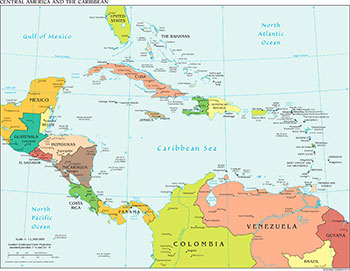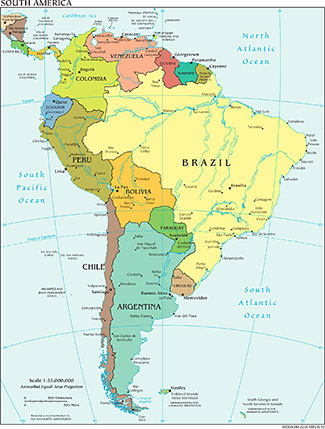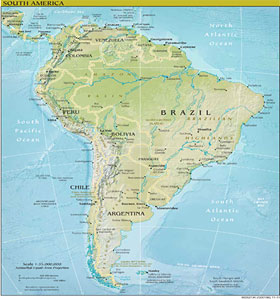 |
 |
Latin America includes the countries of South America and Central America and a few countries of the Caribbean. All of Central America and a portion of the Caribbean are part of North America.
The Latin American culture is just as diverse as North American culture. The culture includes various ethic influences from around the world. Many of the Latin American countries are influenced by the European countries, which colonized them throughout history. There is also an influence from the African cultures that exist as a result of slavery and migration.
Evidence of these influences can be seen in Latin American music and dance, as well as religious and traditional rituals.
 |
 |
![]() Click on each of the following four characteristics to learn more about the region’s religions, languages, literacy rate, and land use. (For the purposes of this exercise, you will compare the countries of Mexico and Brazil.)
Click on each of the following four characteristics to learn more about the region’s religions, languages, literacy rate, and land use. (For the purposes of this exercise, you will compare the countries of Mexico and Brazil.)

Compare the South American land use map (in the triangle) to the South American physical map (pictured above) and answer the questions that follow in your notes.
Interactive popup. Assistance may be required.
The Amazon Basin is the geographic feature that affects the location of resources in Brazil.
Interactive popup. Assistance may be required.
The land in Suriname and French Guiana is solely used as forestland.
Believed to be a tradition brought to the Americas from Spain, a quinceañera is a traditional celebration of a girl’s 15th birthday in the Latin American culture. Marking her transition from girlhood to womanhood, family, friends, and the community celebrate by throwing her an elaborate birthday party.

This is a scene from a quinceañera in California. The festivities usually begin with a religious mass followed by a party.
Elements of Latin American culture can be found in North America as a result of people migrating from Latin American countries. Many of these immigrants come to the United States. It is projected by the U.S. Census that the Latino population will triple in the United States by 2050. Click on the link below to explore a map that illustrates the growth of the Latino population from 1980 to 2008.
Which region(s) of the United States has seen the greatest increase in its Latino population from 1980 to 2008?
Interactive popup. Assistance may be required.
According to the map, the Southwest and Northeast regions have seen the greatest increase in the Latino population.
Sources for images used in this section, as they appear, from top to bottom: